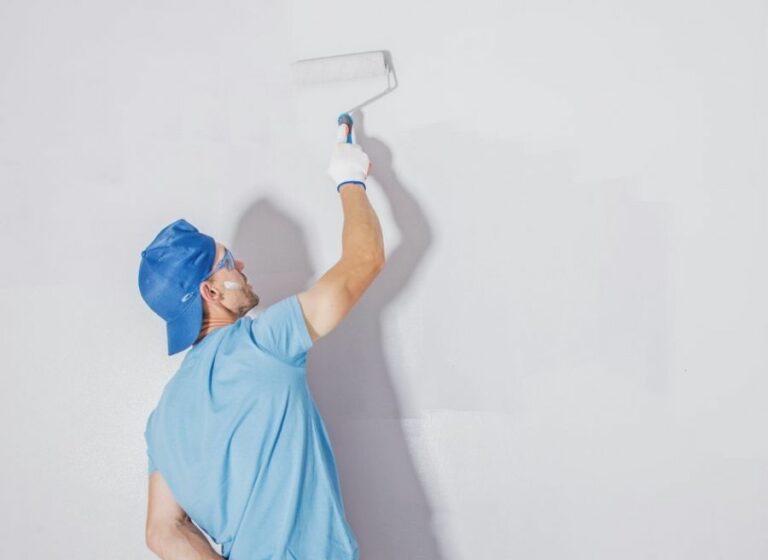Evaluating Surface Conditions Before Commencing The Preparation Process
Before commencing the preparation process of any project, it’s imperative to first evaluate the surface conditions. This crucial step, which is often overlooked or underestimated, can have a significant impact on the success of the project. Thankfully, with years of experience in examining countless surface conditions, we have the knowledge and expertise required to ensure that you approach the task with confidence.
Evaluating surface conditions before commencing the preparation process:
Evaluating surface conditions is essential to determine appropriate preparation steps for sealing, painting, or application processes. Assess factors such as surface material, texture, cleanliness, existing coatings, and moisture content. Use appropriate tools and tests to ensure accurate evaluation and follow necessary preparation steps based on the assessment for optimal results.

Curious about the importance of evaluating surface conditions before starting the preparation process? Dive in as we explore the reasons, methods, and steps to ensure smooth and satisfying results!
Contents
- 1 Analyzing Surface Conditions Prior to Starting Preparation
- 2 Exploring Various Methods of Surface Preparation
- 3 The final step of Surface Preparation Before Applying Coating
- 4 Identifying the Surface Preparation Technique
- 5 Diverse Surface Preparation Approaches for Repair Tasks
Analyzing Surface Conditions Prior to Starting Preparation
Evaluating surface conditions is crucial for determining the appropriate preparation steps needed prior to starting any sealing, painting, or application process. A comprehensive assessment of the surface is necessary to ensure a long-lasting, effective, and visually appealing outcome.
• Importance of Surface Condition Evaluation
Surfaces can range from smooth and flat to rough and irregular, making evaluation highly important. Incorrect evaluation can result in undesirable outcomes such as poor adhesion, inconsistent finishes, or rapid degradation of the applied material.
By thoroughly assessing surface conditions, you can save time, money, and labor, while ensuring the final results meet expectations.
– Identifying Surface Conditions
When evaluating surface conditions, the first step is to identify the existing conditions to determine the necessary preparation required. Some common factors to consider include:
- Surface Material: Different materials require specific preparation methods. For example, concrete may need grinding or acid etching, while metal may require sandblasting or chemical treatment.
- Surface Texture: Uneven or rough surfaces may require leveling or smoothing via sanding, grinding, or other mechanical methods. Extremely smooth surfaces may need scuffing or abrasion to promote adhesion.
- Contamination and Cleanliness: Dirty surfaces will negatively affect adhesion and overall appearance. It is essential to evaluate the degree of contamination, whether it be dirt, dust, oils, or other substances, and ensure thorough cleaning before proceeding. In some cases, specialized cleaning methods may be necessary.
- Existing Coating or Sealer: If the surface already has a sealer, paint, or other coating, evaluate its condition and compatibility with the new application. Previous coatings may need removal or surface preparation to accommodate new materials.
- Moisture Content and Humidity: Surfaces and surrounding environments with high moisture content or humidity can affect paint and sealer adhesion, drying, and curing times. Evaluate humidity levels and use appropriate materials or drying aids to avoid issues.
– Tools for Surface Evaluation
Utilizing proper tools and testing methods can ensure accurate surface evaluation. Some valuable tools and tests for surface condition evaluation include:
- Visual Inspection: A simple visual examination can help identify contamination, uneven surfaces, and inconsistencies.
- Straightedge or Ruler: Use a straightedge to check surface levelness and determine if any additional leveling or smoothing is required.
- Tape Test: Attach a piece of tape to the surface and quickly remove it. If the tape removes dirt or coating or shows weak adhesion, further cleaning or preparation may be necessary.
- Moisture Test: Evaluate moisture content by taping a plastic sheet to the surface, sealing the edges, and waiting 24 hours. If condensation accumulates under the sheet, the surface may be too wet for certain applications.
- pH Testing: For surfaces like concrete, utilizing pH testing can aid in determining the ideal preparation methods for material-specific requirements.
• Steps for Preparing Surfaces
After evaluating the surface conditions, you now have a clear understanding of the necessary steps for proper preparation. Here are some fundamental steps for preparing surfaces based on the identified conditions:
- Cleaning: Thoroughly clean the surface, ensuring the removal of dirt, dust, oil, and other contaminants. This can be done using brooms, vacuums, or pressure washing, depending on the degree of contamination.
- Leveling and Smoothing: If the surface was found to be uneven or rough, utilize leveling or smoothing methods, such as sanding, grinding, or using a self-leveling compound.
- Repairing: Fix any surface damage, such as cracks or holes, using appropriate repair materials or methods.
- Removing Existing Coatings or Sealers: Where necessary, remove any existing coatings or sealers, employing suitable methods like scraping, sanding, or chemical treatments.
- Drying and Adjusting Moisture Content: If moisture content or humidity is a concern, ensure surfaces are dry and employ appropriate materials or drying aids as needed.
- Priming and Conditioning: Depending on the surface material and the application, priming or conditioning may be necessary to promote adhesion and ensure consistency in the final result.
- Masking and Protecting: Before starting the application process, mask off and protect any adjacent surfaces to prevent unintentional exposure to the material being applied.
By diligently evaluating surface conditions and taking the necessary preparation steps based on the assessment, you can ensure optimal results and minimize potential issues. Proper surface preparation is a vital aspect of any successful coating, sealing, or application project.
Exploring Various Methods of Surface Preparation
Surface preparation is essential for various applications, such as painting, coating adhesion, and concrete repair. It determines the success, durability, and quality of the final product.
• Mechanical Surface Preparation
Mechanical preparation involves using machines or tools to remove contaminants and create a uniform surface profile. These methods are popular as they provide efficient and thorough surface cleaning. Common mechanical techniques include:
– Abrasive Blasting
Abrasive blasting is an extremely effective method for removing contaminants, rust, and old coatings. Different abrasives, such as sand, steel grit, or crushed glass, are propelled at high speed onto the surface to achieve the desired clean and rough profile.
Care must be taken to select the appropriate abrasive medium and blasting equipment based on the substrate material and desired outcome.
– Grinding
Grinding uses abrasive wheels or disks attached to hand-held or stationary equipment to remove surface defects and create a smooth, even profile. It generates a significant amount of dust, so proper ventilation and dust collection systems are necessary for safe working conditions.
– Shot Blasting
Shot blasting propels small steel or stainless steel balls (shots) at a high velocity onto the surface, removing surface contaminants and creating a rough profile. It is particularly suited to concrete surfaces and large floor areas due to its speed and efficiency.
– Scarifying
Scarifying uses rotating cutting tools to aggressively remove material from a surface, including concrete, asphalt, and metal. It is ideal for leveling uneven surfaces and removing coatings, but it may require additional finishing to achieve the desired surface profile.
• Chemical Surface Preparation
Chemical methods involve using solvents, acids, or alkalis to clean and etch surfaces. This approach is often used on delicate substrates and in combination with other methods to ensure uniform preparation.
– Solvent Cleaning
Solvent cleaning dissolves and removes contaminants like grease, oil, and dirt without affecting the underlying surface. It is essential to choose a solvent compatible with the material and its intended purpose.
Special care should be taken to ensure proper disposal and ventilation when working with solvents.
– Acid Etching
Acid etching reacts with concrete surfaces to create a rough profile suitable for adhesion. The acid used most often for this purpose is muriatic acid. This process should be done with caution and requires proper neutralization and waste disposal procedures.
– Alkaline Cleaning
Alkaline cleaning involves using high-pH solutions to remove contaminants from surfaces, such as oil, grease, and dirt. It is commonly used on metal surfaces and should be followed by thorough rinsing to prevent chemical contamination.
• Manual Surface Preparation
Manual preparation methods, such as wire brushing or scraping, are labor-intensive but often necessary for small or inaccessible areas.
– Wire Brushing
Wire brushing is used for removing loose paint, rust, or scale from metal surfaces. It leaves a light surface profile suitable for further surface preparation or coating application. Wire brushing tools, including hand brushes and power brushes, are available in various sizes and bristle materials.
– Scraping
Scraping involves using hand tools, such as knives, scrapers, or chisels, to remove surface contaminants, coatings, or sealants. It is suitable for delicate surfaces or intricate areas but is time-consuming and labor-intensive.
• Surface Preparation Standards
Several organizations, such as SSPC (The Society for Protective Coatings) and NACE International, provide guidelines and standards for surface preparation.
These standards outline the desired surface profile and cleanliness levels required for specific applications, ensuring the best possible adhesion and performance of coatings.
• Final Thoughts
In conclusion, selecting the appropriate surface preparation method depends on factors such as the substrate material, application, and desired outcome. Optimal surface preparation requires a combination of techniques tailored to the project’s unique requirements.
Properly prepared surfaces significantly enhance the longevity and performance of coatings, ensuring a successful and durable final product.
| Various Methods of Surface Preparation |
|---|
| Cleaning |
| Hand tool cleaning |
| Power tool cleaning |
| Blast cleaning (abrasive blasting) |
| Chemical cleaning |
| Acid etching |
| Water jetting |
| Flame cleaning |
| Ultrasonic cleaning |
The final step of Surface Preparation Before Applying Coating
Surface preparation is a crucial component in the successful application of protective coatings. It entails ensuring that the substrate surface is free of contaminants, has the proper profile for adhesion, and is prepared to receive the coating material.
The final stage of surface preparation often determines the longevity and effectiveness of the applied coating.
• Importance of Proper Surface Preparation
Poorly prepared surfaces can result in a multitude of problems, including adhesion failure, blistering, and corrosion under the coating. These issues can decrease the lifespan of the protective coating, leading to costly maintenance and eventual replacement.
Proper surface preparation, on the other hand, promotes strong adhesion, prolonged service life, and optimal performance of the coating system.
• Cleaning and Degreasing the Surface
The first step in surface preparation is removing any existing contaminants, such as oils, grease, dirt, and soluble salts. Ensure that the substrate is thoroughly clean before proceeding to the final stage. Various methods can be employed to achieve this, including:
- Solvent cleaning: This involves using solvents or detergents to dissolve and wash away grease, oils, and other organic contaminants.
- Low-pressure water cleaning: Used for the removal of loose dirt and debris, this method involves spraying water onto the surface using a pressure of less than 5,000 psi.
- High-pressure water cleaning: For more stubborn dirt and grime, you may need to employ water pressure between 5,000 and 10,000 psi.
It is essential to allow the surface to dry completely after cleaning, as moisture can affect adhesion and cause the coating to fail prematurely.
• Surface Profile and Roughness
The next step involves creating the appropriate surface profile or roughness to enhance the bond between the substrate and the applied coating. The required profile will depend on the type of coating being applied, as well as the substrate material. Common methods include:
- Abrasive blasting: This technique involves projecting abrasive particles at high speed onto the surface. There are various types of abrasive materials available, such as sand, steel shot, and aluminum oxide. When selecting an abrasive, it is essential to consider factors such as surface hardness, desired profile, and environmental regulations. Always wear appropriate personal protective equipment (PPE) when performing abrasive blasting.
- Grinding and sanding: These mechanical methods employ the use of abrasive tools or disks to physically remove a thin layer of the substrate, achieving the desired roughness.
- Chemical etching: Particularly useful for concrete surfaces, chemical etching involves applying an acid-based solution that reacts with the substrate to create a rough profile.
• Inspecting and Testing the Surface
Once the surface has been cleaned and an appropriate profile has been achieved, it is crucial to inspect and test it to ensure that it is ready for coating. This may involve methods such as:
- Visual inspection: Look for any remaining contaminants, defects, or areas that may require further preparation.
- Adhesion testing: This involves applying a small test patch of the coating, allowing it to cure, and then assessing its bond strength. Adhesion testers are available on the market to quantify adhesion in terms of psi or MPa.
- Soluble salt testing: Test kits are available to measure the concentration of soluble salts on the surface. High salt levels can lead to premature coating failure due to osmotic blistering and under-film corrosion.
- Surface profile measurement: Using specialized instruments like replica tape or a surface profile gauge, verify that the achieved profile is within the specified range for the applied coating.
• Final Recommendations before Applying Coating
- Ensure that the surface is clean and free of contaminants. If necessary, reclean the surface before coating.
- Verify that the surface profile meets the requirements of your chosen coating material. If it is not within the specified range, consider further preparation or selecting a different coating.
- Perform adhesion testing and correct any issues before proceeding with the full application.
- Follow the coating manufacturer’s recommendations for proper mix, application, and cure times to achieve optimal bond strength and durability.
- Always wear appropriate PPE when working with chemicals, abrasive materials, and coatings.
By following these guidelines and investing time in proper surface preparation, you can ensure long-lasting protection and performance from your applied coating system. Check out resources like the SSPC Surface Preparation Standards for a detailed guide on industry best practices for surface preparation.
Identifying the Surface Preparation Technique
Surface preparation is a crucial step in the application of coatings, adhesives, and other materials as it significantly influences the performance, durability, and overall success of the final product.
• Why is Surface Preparation Important?
Preparing a surface is essential as it helps in removing dirt, oil, grease, and other contaminants that may affect the adhesion and performance of the applied coating or adhesive.
Additionally, it aids in creating a suitable anchor pattern or surface profile, allowing the applied material to bond properly with the substrate.
Proper surface preparation can also enhance the durability and longevity of the applied material, reducing maintenance and repair costs in the long run.
• Key Factors to Consider
Before undertaking any surface preparation method, numerous factors must be considered to ensure optimal results. These factors include the following:
- Surface condition: Assess the existing condition of the surface, including contaminants, debris, and previous coatings or adhesives.
- Material compatibility: Determine whether the surface preparation method chosen is compatible with the material to be applied.
- Environmental conditions: Consider the environmental conditions such as temperature, humidity, and ventilation, which may impact the surface preparation process and effectiveness of the chosen method.
- Safety: Evaluate the safety concerns for workers, equipment, and the environment when using specific surface preparation methods.
- Cost-effectiveness: Balance the overall costs of the surface preparation method and its effectiveness in achieving the desired results.
• Common Surface Preparation Methods
– Abrasive Blasting
Abrasive blasting is a popular surface preparation method involving directing a high-pressure stream of abrasive particles against the surface to remove contaminants, create a surface profile, and roughen the surface.
Different types of abrasives, such as sand, glass beads, walnut shells, and steel shots, are used in this process, depending on the substrate material and the desired outcome.
Recommendation: Choose the appropriate abrasive type and consider using equipment that can recycle the abrasive media to reduce waste and disposal costs.
– Water Jetting
Water jetting uses high-pressure water to clean and prepare surfaces. The water pressure can be adjusted to remove loose paint, rust, and other contaminants. It is an environmentally friendly method as it does not generate dust or require abrasive materials.
Recommendation: Consider using hot water or adding a detergent to water for enhanced cleaning of oily or greasy surfaces.
– Hand and Power Tool Cleaning
Hand and power tool cleaning are manual methods of surface preparation using tools such as scrapers, wire brushes, and grinding wheels to remove dirt, rust, and loose coatings. While these methods offer a high level of control, they can be time-consuming and labor-intensive.
Recommendation: To ensure consistent surface preparation, operators should receive proper training in the use of hand and power tools.
– Chemical Cleaning
Chemical cleaning involves the use of solvents, acids, or other chemicals to dissolve and remove contaminants from the surface. This method is effective in removing oil, grease, and other organic contaminants but may require ventilation and proper disposal of waste chemicals.
Recommendation: Test the chemical compatibility between the cleaning agent and the substrate material to avoid possible damage.
– Surface Abrading
Surface abrading is a method that uses abrasive pads, discs, or papers to roughen up the substrate surface, creating a more suitable surface profile for adhesion. Surface abrading is often used in refinishing and repainting applications.
Recommendation: Abrading discs with different grit sizes should be used according to the roughness required on the substrate surface for optimal adhesion.
• Quality Control and Inspection
To ensure the success of the surface preparation process and the applied material’s performance, quality control and inspection should be conducted before, during, and after the process.
Some of the common inspection techniques include visual inspection, surface profile measurements (using a replica tape or surface profile gauge), and adhesion testing.
Recommendation: Develop a quality control plan that outlines inspection requirements, methods, and acceptance criteria to achieve a consistently high-quality surface preparation process.
In conclusion, surface preparation plays a pivotal role in ensuring the durability and performance of applied coatings, adhesives, and other materials.
By understanding and selecting the appropriate surface preparation methods, considering various factors, and maintaining quality control, it is possible to achieve long-lasting and successful results.
Diverse Surface Preparation Approaches for Repair Tasks
Surface preparation is a vital aspect of any repair work, ensuring that the applied materials bond effectively and create a long-lasting, functional result.
• Abrasive Blasting
Abrasive blasting is a technique that involves projecting a high-pressure stream of abrasive particles toward a surface. This method serves to clean and profile a surface while also removing contaminants, rust, and old coatings.
Abrasive blasting is suitable for large surfaces that require extensive treatment, such as metal structures, masonry, and concrete surfaces.
Some common types of abrasive blasting include:
- Sandblasting: This method uses high pressure to propel sand particles onto the surface, thereby eradicating any existing contaminants. Sandblasting is an efficient technique for removing dirt, paint, and rust. However, due to the potential health hazards associated with silica sand, alternative media like soda, steel grit, or glass beads are often recommended.
- Wet Abrasive Blasting: This method involves the use of water, which decreases dust and airborne contaminants during the blasting process. Wet abrasive blasting is especially useful for lead paint removal and asbestos abatement projects.
- Soda Blasting: This method employs sodium bicarbonate (baking soda) as the abrasive medium. Soda blasting is gentle, non-toxic, and biodegradable, making it ideal for sensitive surfaces and environmentally-conscious projects. Moreover, its non-abrasive nature allows it to be used on fragile surfaces such as wood, tile, brick, and automotive parts.
• Hand and Power Tools
Hand and power tools are versatile, portable, and easy to use, making them a popular choice for surface preparation in repair work. Common hand and power tools for surface preparation include:
- Wire Brushes: These are typically used for removing loose paint, rust, and other surface contaminants. Brushes come in various types and sizes, with smaller brushes being suitable for finer detail work and tight spaces.
- Scrapers: Scrapers are ideal for removing paint, old coatings, and adhesives from surfaces. Manual scrapers may be used for smaller jobs, while powered scrapers can provide more efficient results on larger areas.
- Grinders: Angle grinders, with appropriate abrasive disks, can be used to remove paint, rust, and coatings from metal surfaces, as well as to smoothen rough concrete or masonry surfaces.
- Needle Guns: These pneumatic tools use multiple needles to impact the surface, effectively removing rust, paint, and other material build-ups. Needle guns are most commonly used on steel and iron surfaces.
When using hand and power tools, it is essential to adhere to safe working practices and the proper use of personal protective equipment (PPE), such as gloves, ear protection, safety glasses, and respiratory protection.
• Chemical Cleaning
In some instances, chemical cleaning may be the best solution for preparing surfaces for repair work. This technique involves applying a chemical solution that reacts with the surface contaminants, facilitating their removal.
- Paint Strippers: These can be used to remove paint and other coatings from surfaces. Various stripper formulations are available, depending on the type of paint and the surface material, such as wood, metal, or masonry.
- Rust Removers: Rust removers typically contain acidic compounds that react with rust to dissolve it, enabling easy removal. After using a rust remover, it is crucial to neutralize the acid with an alkaline solution, followed by thorough rinsing and drying of the surface.
- Concrete Cleaners: These are designed to remove various contaminants, such as oil, grease, and dirt, from concrete surfaces. Some concrete cleaners may also contain etching agents to help open up pores on the surface, allowing for better adhesion of repair materials.
It is essential to follow the manufacturer’s instructions when using any chemical cleaning agents, as improper use may lead to ineffective results or damage to surfaces. Always use appropriate PPE to protect against chemical exposure.
• Conclusion
Choosing the right surface preparation method for repair work is vital for the success and longevity of the project.
Factors such as the type of surface, the extent of damage or contamination, and environmental considerations must be evaluated to determine the most suitable method for the task.
Employing a combination of techniques may often be the most effective way to achieve thorough and efficient surface preparation, ensuring a high-quality and long-lasting repair.







